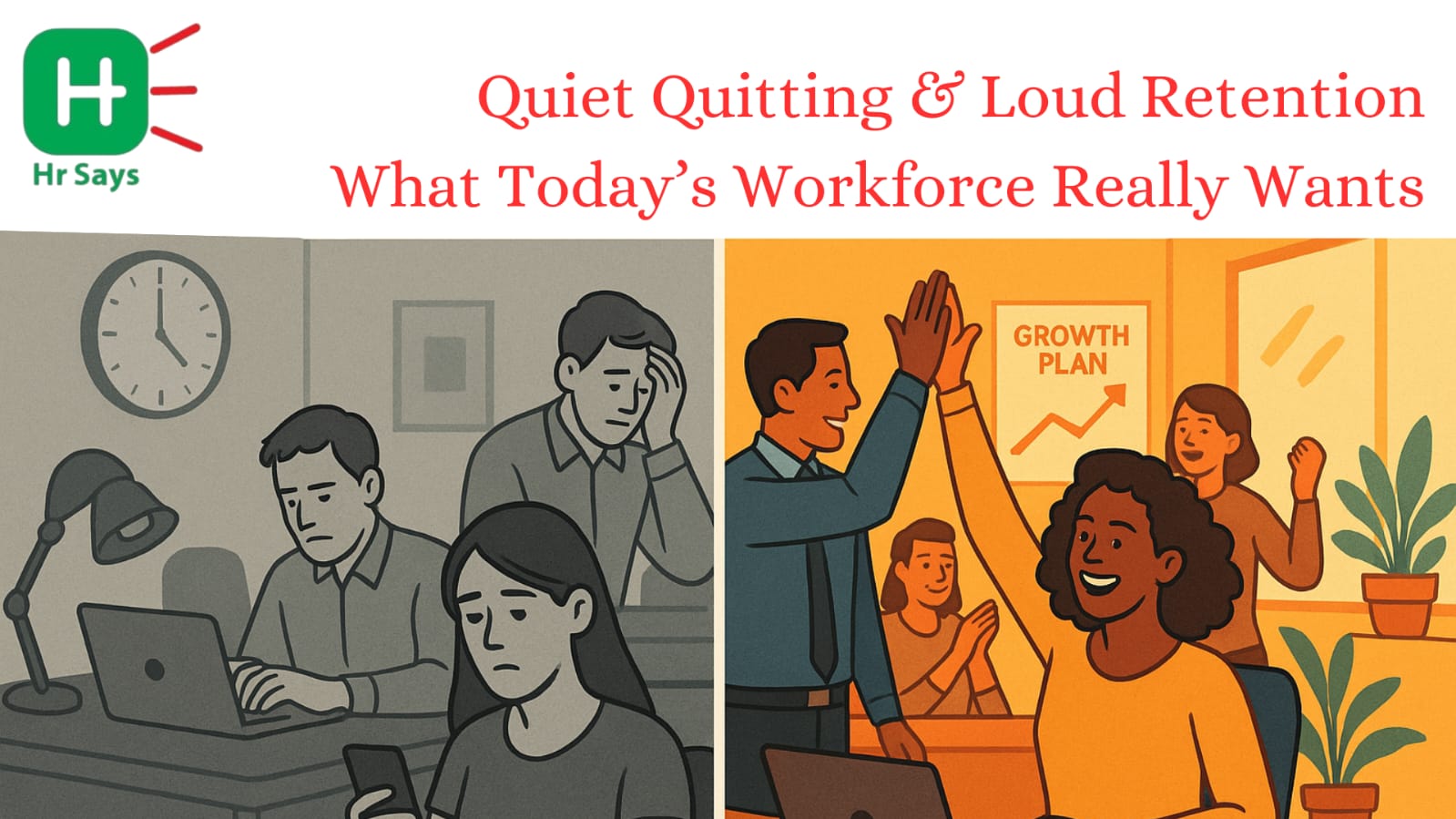What happens when people stop trying, but don’t leave? And when they stay, not because they love it—but because they’re paid just enough to not quit? That’s the world of quiet quitting. And it’s louder than you think.
Shift That Doesn’t Shout
No doors slammed. No dramatic exits. Just calendars blocked out, messages delayed, and work done—barely.
Quiet quitting isn’t quitting at all. It’s doing the job—and not an inch more. No unpaid overtime. No staying late to “show passion.” No sacrificing weekends for deadlines.
It’s a shift. From going “above and beyond” to “within what’s fair.” And it didn’t start with Gen Z. It started when burnout became normal. When effort was taken for granted.
Managers called it entitlement. Employees called it boundaries. Who’s right? Maybe both. Maybe neither.
Why It Got Quiet
People want more than perks. More than pizza parties and ping pong tables. They want purpose. They want balance. They want to feel like their work matters.
Surveys across the U.S., EU, and GCC show similar signals. Over 60% of workers feel emotionally disconnected from their jobs (Gallup, 2024). In Europe, stricter labor laws have softened burnout, but not eliminated disengagement. In GCC countries, fast-paced growth has brought new pressure—and rising expectations.
Pay is important, yes. But meaning? It’s non-negotiable.
What Loud Retention Really Means
So companies got louder. They started offering more—more benefits, more flexibility, more recognition. But louder doesn’t always mean clearer.
Loud retention is not about shouting from rooftops. It’s about showing up, every day, in real
ways. It's giving feedback that actually helps. It’s promotions that feel earned—not political. It’s
managers who listen, not just talk.
And most importantly—it’s not waiting for people to disengage before you ask how they’re doing.
The loudest strategy? Consistency.
The Real Want
Today’s workforce isn’t asking for the moon. Just fairness. Just respect. Just the sense that if they give time, effort, and energy—it won’t be wasted.
They want space to grow. Not just more titles. They want mental health taken seriously. Not just token meditation apps.
They want leadership to be human. Not just efficient.
Conclusion
Quiet quitting isn’t a trend. It’s a symptom. Loud retention isn’t the cure. It’s a conversation starter. What today’s workforce really wants isn’t complicated. It’s just honest.
This may be the most difficult part.

 Quiet quitting does not imply laziness. It’s about meaning. Loud retention isn’t about rewards. It’s about respect. Somewhere in the silence, the workplace is speaking. Are companies really listening?
Quiet quitting does not imply laziness. It’s about meaning. Loud retention isn’t about rewards. It’s about respect. Somewhere in the silence, the workplace is speaking. Are companies really listening?












.jpeg)
.jpeg)

.jpeg)

.jpeg)


.jpeg)

.jpeg)

.jpeg)


